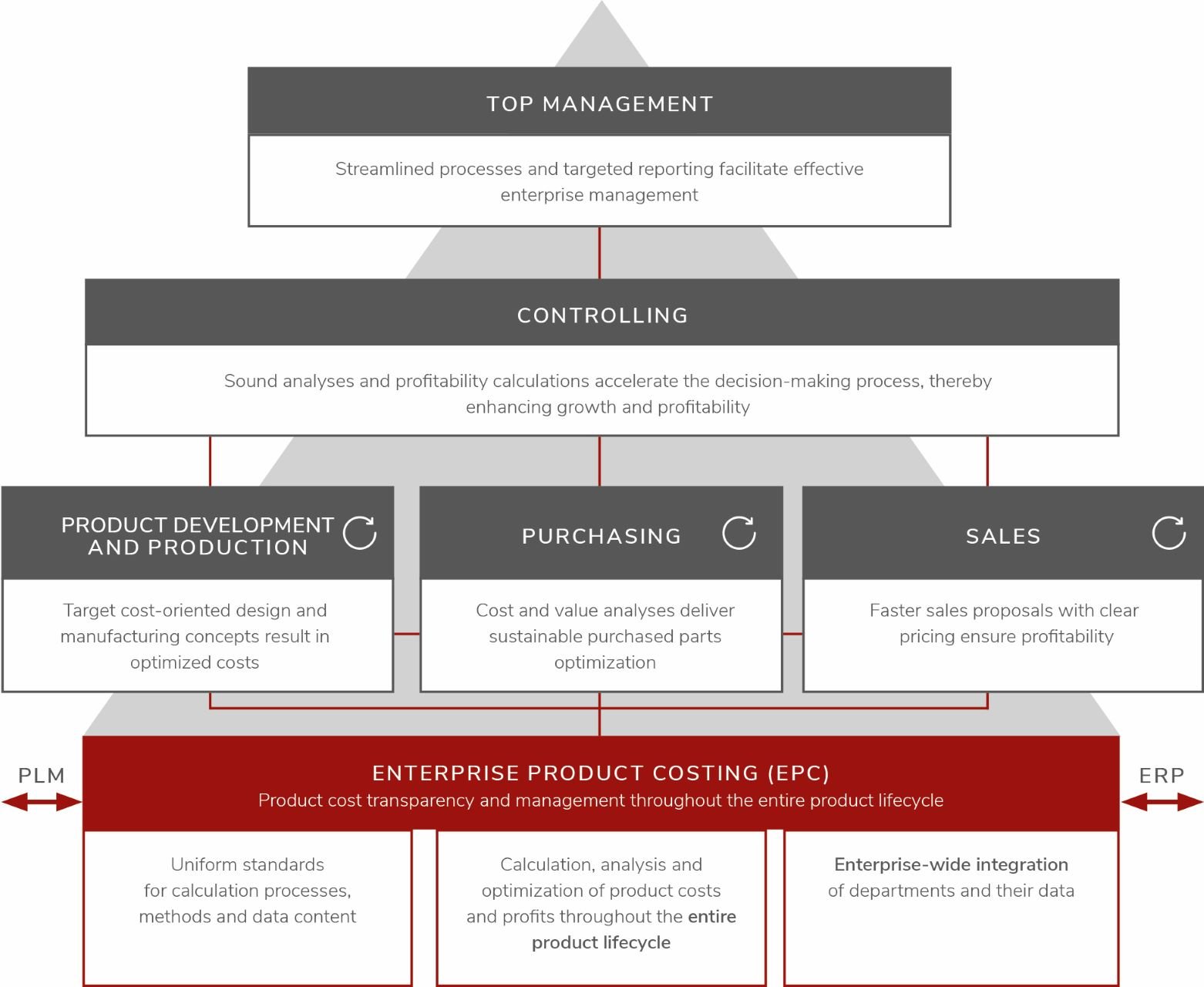When confronted with the term artificial intelligence, the first thing to come to mind for many people is probably something like the android in the movie “Terminator” or the human-like computer HAL 9000 from the film “2001: A Space Odyssey”.
But artificial intelligence is often closer than we think. For example, it supports us in our everyday lives: the artificial intelligence of translation platforms such as Google Translate or DeepL understand details and reproduce them in the translations. Voice assistants such as Alexa or Siri translate our voice commands into a wide variety of end devices. In vehicles, intelligent parking aids make it easier for us to manoeuvre into narrow parking spaces.
In business practice, intelligent algorithms could in future cover master data management in purchasing or compare invoices with the underlying agreement. The question that arises in the context of Enterprise Product Costing: How will artificial intelligence affect cost management? We believe that all enterprise workflows in a company will change with AI driving digital business processes – also in cost management.
Predictive costing with artificial intelligence will simplify decision-making processes for rapid cost-based pricing and price adjustment.
Global interconnections and disruptive technological innovations complicate cost structures and promote the emergence of cost drivers. This requires a flexible and adaptable approach to cost estimation and assessment. Predictive costing can provide intelligent solutions in the future, such as early intelligent cost estimation.
What requirements must be met for artificial intelligence to be used in product costing?
The use of artificial intelligence in cost management is based on two building blocks: standardization and digitization of product costing:
-
Standardization: Without standards it is impossible to calculate data uniformly or to combine data from various sources in a meaningful way and use this for AI technology.
-
Digitization: Without exception, enterprises must work with digital communication structures if they want to calculate costs using AI.
How can standardization and digitization be implemented in product costing?
Modern Enterprise Product Costing (EPC) is both a measure and a tool. EPC is a cost management method for standardized, enterprise-wide costing that ensures cost transparency throughout the entire product lifecycle. The method is implemented using EPC software designed for collaboration in an interdisciplinary team.

Figure: Concept Enterprise Product Costing, Source: FACTON
Companies can use their conventional systems (e.g. standard ERP or PLM software) for costing without EPC software, but these tools are often very inconvenient because any cost-relevant data – if there is any available at all – must first be manually collected from the various sources. And at the end of the day, the results are generally inaccurate.
EPC software solves this problem using a central database that automatically gathers and regularly updates all cost-relevant data from existing IT systems via interfaces. This method is not only significantly faster, it also ensures that all users work with the same data and standards to promote a common understanding of costs. EPC software can process large amounts of data and transparently display the costs of complex products: Cost drivers become clearly visible and can be eliminated.
 Would you like to learn more about the use of artificial intelligence in cost management? Read our white paper predictive costing about possible future applications, increasing demands on cost calculation and general requirements for the use of artificial intelligence.
Would you like to learn more about the use of artificial intelligence in cost management? Read our white paper predictive costing about possible future applications, increasing demands on cost calculation and general requirements for the use of artificial intelligence.
Why do I need an enterprise-wide cost solution?
Looking at the current situation we see: Even by today’s modern standards, costing approaches in manufacturing companies still do not always work smoothly. Efficient product costing fails because without an innovative costing solution it is not possible to overcome the three major obstacles:
- The current processes are too complex, not designed for cross-departmental collaboration and are not standardized.
- Essential information is scattered across numerous sources.
- Costs are not evaluated throughout the entire product lifecycle.
Insufficient standardization of data and digitization of costing in the company also means that enterprises are far from automated business processes, e.g. through the widespread use of AI in costing.
The good news that drives us to keep the topic on the agenda: Companies are becoming increasingly aware that the standardization and digitization of costing is an essential prerequisite for predictive costing.
You don't want to miss any of our blog posts?
Subscribe to our blog at the bottom of the page.
⇓⇓⇓
* The text contains excerpts from the white paper Predictive Costing.



![alexander-headshot@2x[1]](https://www.facton.com/hubfs/Assets%20-%20IL%20-%202018/Management%20and%20Advisory%20Board/alexander-headshot@2x%5B1%5D.jpg)